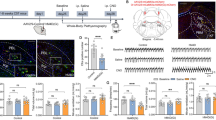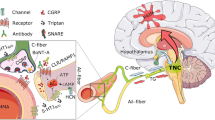Abstract.
We have previously demonstrated that Mytilus edulis pedal ganglia contain opiate alkaloids, i.e., morphine and morphine 6 glucuronide (M6G), as well as mu opiate receptor subtype fragments exhibiting high sequence similarity to those found in mammals. Now we demonstrate that M6G stimulates pedal ganglia constitutive nitric oxide (NO) synthase (cNOS)-derived NO release at identical concentrations and to similar peak levels as morphine. However, the classic opiate antagonist, naloxone, only blocked the ability of morphine to stimulate cNOS-derived NO release and not that of M6G. CTOP, a mu-specific antagonist, blocked the ability of M6G to induce cNOS-derived NO release as well as that of morphine, suggesting that a novel mu opiate receptor was present and selective toward M6G. In examining a receptor displacement analysis, both opiate alkaloids displaced [3H]-dihydromorphine binding to the mu opiate receptor subtype. However, morphine exhibited a twofold higher affinity, again suggesting that a novel mu opiate receptor may be present.
Similar content being viewed by others
Author information
Authors and Affiliations
Additional information
Received 1 November 2001; received after revision 1 February 2002; accepted 1 February 2002
Rights and permissions
About this article
Cite this article
Mantione, K., Zhu, W., Rialas, C. et al. Morphine 6 glucuronide stimulates nitric oxide release in mussel neural tissues: evidence for a morphine 6 glucuronide opiate receptor subtype. CMLS, Cell. Mol. Life Sci. 59, 570–574 (2002). https://doi.org/10.1007/s00018-002-8449-z
Issue Date:
DOI: https://doi.org/10.1007/s00018-002-8449-z




